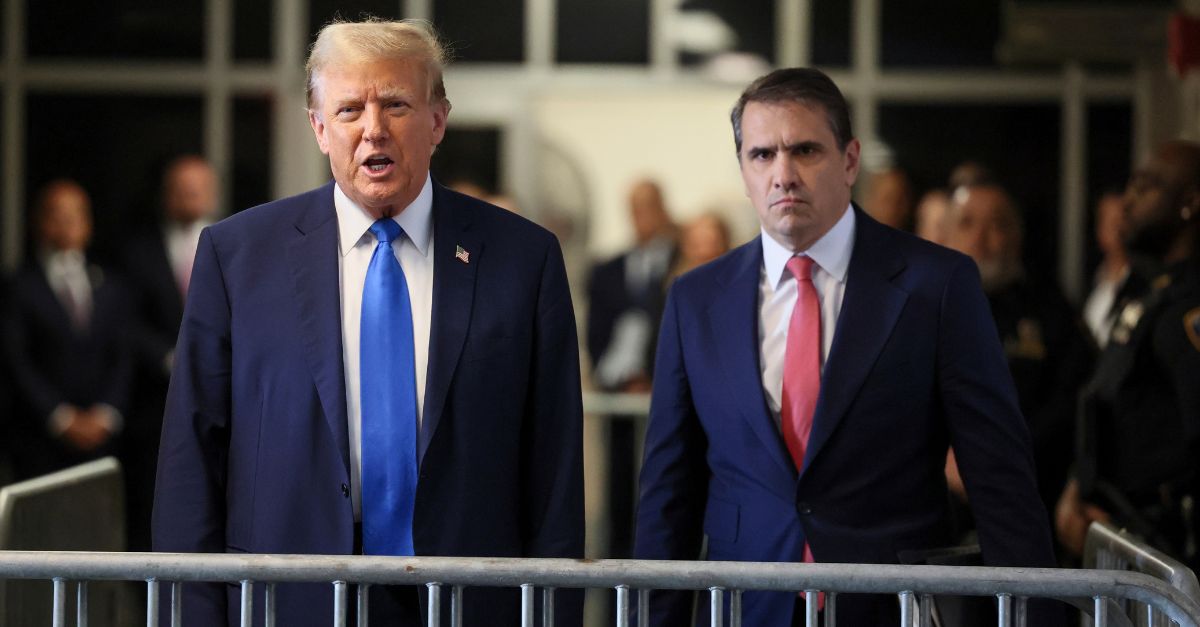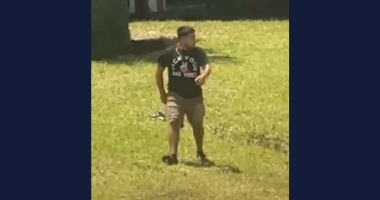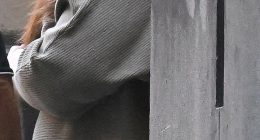
Republican presidential candidate and former President Donald Trump speaks to reporters, next to his attorney Todd Blanche, at Manhattan state court in New York, Monday, April 22, 2024. (Brendan McDermid/Pool Photo via AP)
A former president of the United States is on trial, and no more than the jury and a courtroom gallery will be able to witness the historic event.
Although we can listen in to arguments before the U.S. Supreme Court in real time, and tune in to every single motion hearing of the “Idaho Four” murders, or watch gavel-to-gavel Idaho’s “Doomsday Cult” murder trial, we can’t watch a former U.S. president face a jury of his New York peers.
This case has all the ingredients of a runaway true crime smash hit. A reality television star is running for president. He allegedly had an affair with a porn star. The candidate allegedly asks his “fixer” to pay off the porn star to keep her quiet in the waning days of the campaign. The candidate allegedly ordered the falsification of business records to make it look like the “fixer” was paid for legal services and the hush money was a figment of the porn star’s imagination.
Last summer I wrote in the Pennsylvania Capital Star, “Everyone in the country, and around the world, should have the opportunity to watch, in real time, the unfiltered presentation of evidence” against Donald Trump and from Trump’s “legal team, if he chooses to present evidence.”
“News of the trial should not come exclusively from talking heads and media outlets sometimes biased in their reporting,” I stated.
So why can’t we watch the first of what might be Trump’s four criminal trials — and perhaps one of the most significant events in history?
New York does not permit cameras in the courtroom. If you want to document what is going on you better bring a sketch artist.
According to The Associated Press, regulations limiting media coverage in New York courtrooms dates back nearly a century. After the trial of Bruno Hauptmann for the kidnapping and murder of Charles Lindbergh’s young son, photographers were banned from New York courtrooms. The ban extended to film and ultimately to television cameras.
The two federal courtrooms where special counsel Jack Smith will try Trump for allegedly promoting insurrection and mishandling secret documents will also be dark.
Electronic media coverage of criminal proceedings in federal court is expressly prohibited under the Federal Rules of Criminal Procedure. Rule 53 provides:
Except as otherwise provided by a statute or these rules, the court must not permit the taking of photographs in the courtroom during judicial proceedings or the broadcasting of judicial proceedings from the courtroom.
The only real chance of watching Trump on trial will be in Georgia, where Trump faces charges of election meddling. The state gives judges discretion whether to allow television cameras in the courtrooms. Fulton County Superior Court Judge Scott McAfee has said he will make all hearings and trials in that case available for broadcast.
Matthew T. Mangino is of counsel with Luxenberg, Garbett, Kelly & George P.C. His book, The Executioner’s Toll (2010) was released by McFarland Publishing. You can reach him at www.mattmangino.com and follow him on X @MatthewTMangino
Have a tip we should know? [email protected]








